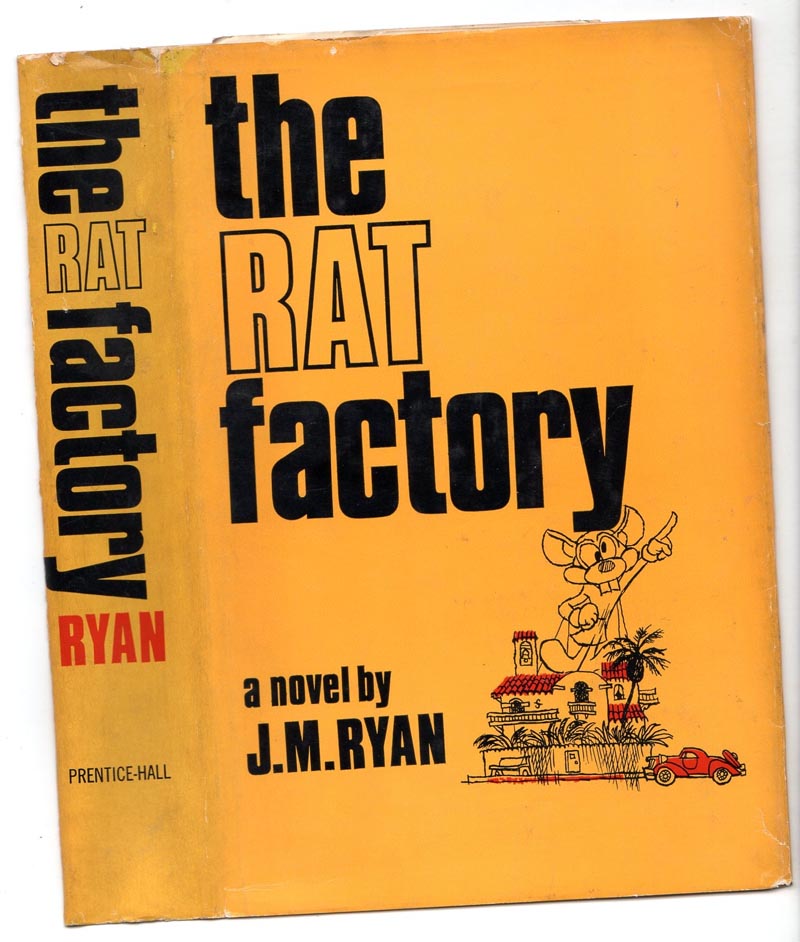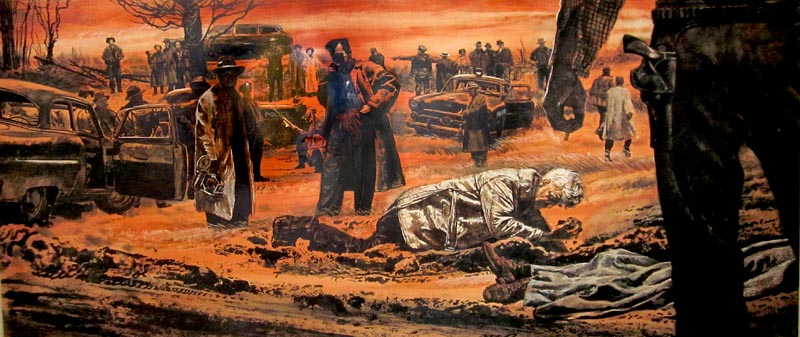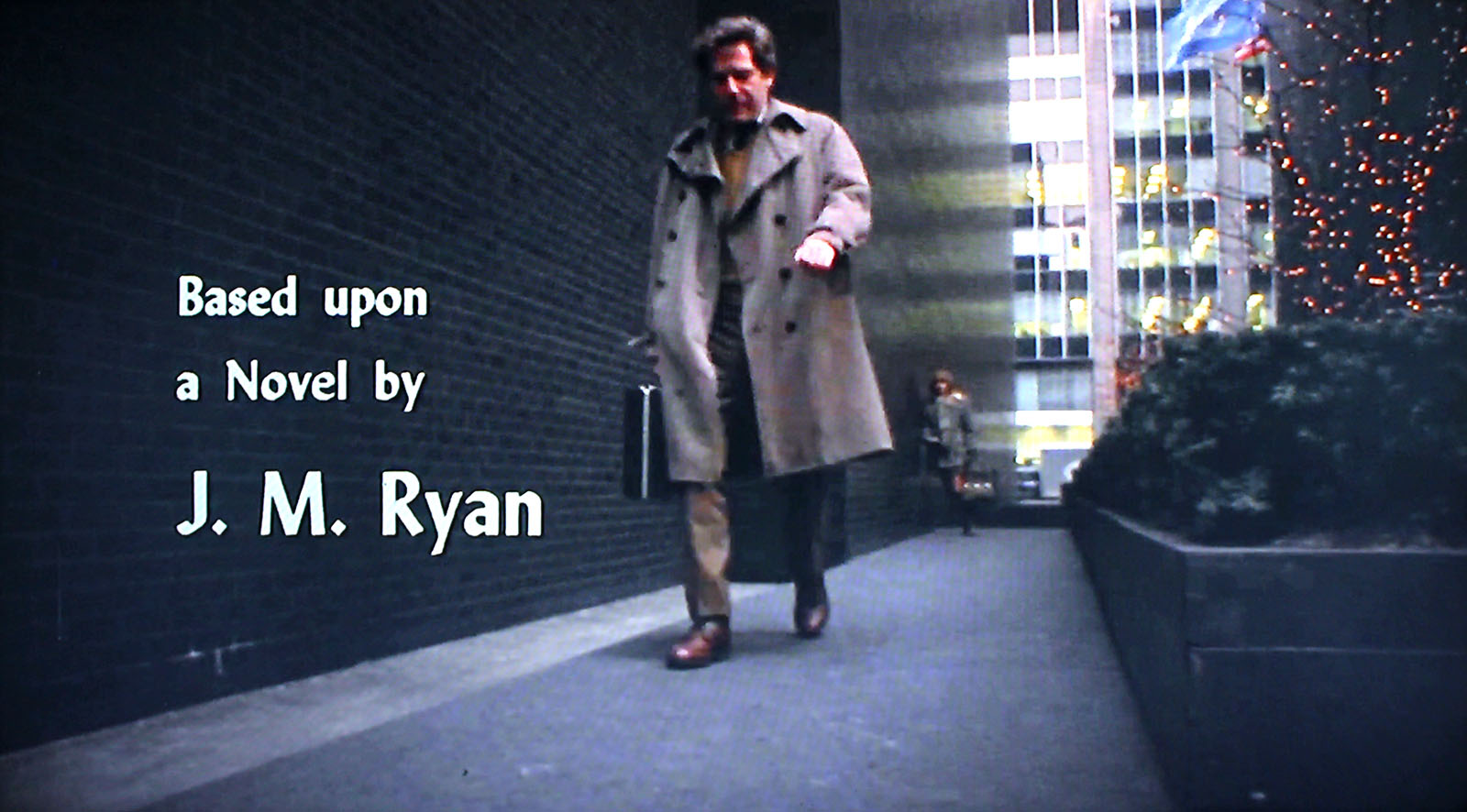As last week's guest author Ken Steacy noted, McDermott was there during the legendary 1930s Disney animators strike, which explains the title and tone of one of his other books, The Rat Factory.

When WWII came, McDermott joined the Marines. He served as a combat artist with the 3rd Amphibious Corps. His work documenting the invasion and takeover of the Guadalcanal, Guam and Okinawa are now part of the Marine Corps Art Collection.

That experience must have served McDermott well after the war. He made his way to New York City, found representation with Thompson Associates, and began illustrating tough guy stories for the 'men's sweat' magazines like Bluebook, True and Argosy.


Over the last few days I've scoured my magazine collection for McDermott artwork. I looked through hundreds of 1950s issues of Good Housekeeping, Colliers, Cosmo, American, Woman's Home Journal, Woman's Day, Redbook, McCall's and Esquire and found hardly a trace of McDermott. By contrast, his work appeared regularly in Outdoor Life, Saga, and the other manly mags mentioned above.

If John McDermott did in fact contribute all the prop art seen in the 1970 film 'Loving,' as we suspect he did...

... that would seem like a natural fit. If he also did romance art like the example shown in the film, then it must have been a far rarer subject for him. I couldn't find a single example in my collection.

I don't know if illustration work sustained McDermott during the 1960s, when there was a general decline in demand, but the restless McDermott was busy with other interests. According to Francis Fay Jr., the author of a 1996 newspaper article on McDermott, the artist had begun producing "home television documentaries with a 16mm camera."

McDermott would storyboard his movies during the week, then employ friends and neighbours to act them out for his camera on the weekends. Early amateur short films entitled "The Cornfield at Antietam" and "Chancellorsville" lead to a more ambitious hour-long film called "Pickett's Charge", that caught the attention of a producer at PBS, who made it a segment on a series called "The Odessey." It was later rebroadcast (twice!) on CBS television with an introduction by President Eisenhower and British Field Marshall Montgomery.

John McDermott was on a roll: The success of "Pickett's Charge" resulted in a Ford Foundation grant which McDermott used to make a two-hour production called "Belleau Wood," about a failed WWI battle - a low point in Marine Corps history.
But even his success in illustration and film making was not enough for McDermott. As we already know, during the '60s he became the published author of "Brooks Wilson Ltd." and "The Rat Factory." But it was news to me to discover he had two other books published during that same period. All in, McDermott authored four published books in four years and had one (Brooks Wilson Ltd.) turned into the feature film "Loving".

One would imagine that would have pleased anyone - but not John McDermott.

According to Francis Fay Jr., McDermott was so incensed by the treatment Hollywood gave his book that he showed up at the Westport premiere of the film sporting a large button that read: "They Changed It!"
* Thanks to Ken Steacy for the screen grabs from the film, Loving, used in today's post.
* Thanks to Bill Peckmann for the scan of the cover of his original first printing copy of "The Rat Factory" used in today's post.
* Thanks to Brian Postman for the scan of a McDermott original he owns used in today's post. If anyone is interested in purchasing the original (its the large panoramic crime scene in orange seen above) Brian will entertain serious inquiries at bpostman58[at]gmail[dot]com






0 comments:
Post a Comment